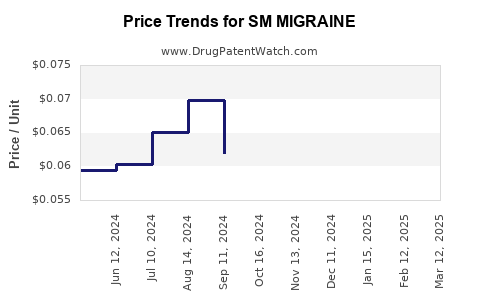Drug Price Trends for SM MIGRAINE
✉ Email this page to a colleague

Average Pharmacy Cost for SM MIGRAINE
| Drug Name | NDC | Price/Unit ($) | Unit | Date |
|---|---|---|---|---|
| SM MIGRAINE 250-250-65 MG CPLT | 70677-0119-01 | 0.06295 | EACH | 2024-11-20 |
| SM MIGRAINE 250-250-65 MG CPLT | 70677-0119-01 | 0.06531 | EACH | 2024-10-23 |
| SM MIGRAINE 250-250-65 MG CPLT | 70677-0119-01 | 0.06200 | EACH | 2024-09-18 |
| SM MIGRAINE 250-250-65 MG CPLT | 70677-0119-01 | 0.06979 | EACH | 2024-08-21 |
| >Drug Name | >NDC | >Price/Unit ($) | >Unit | >Date |


